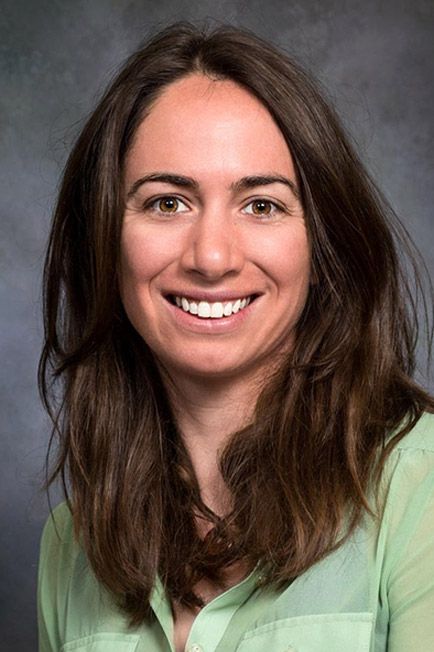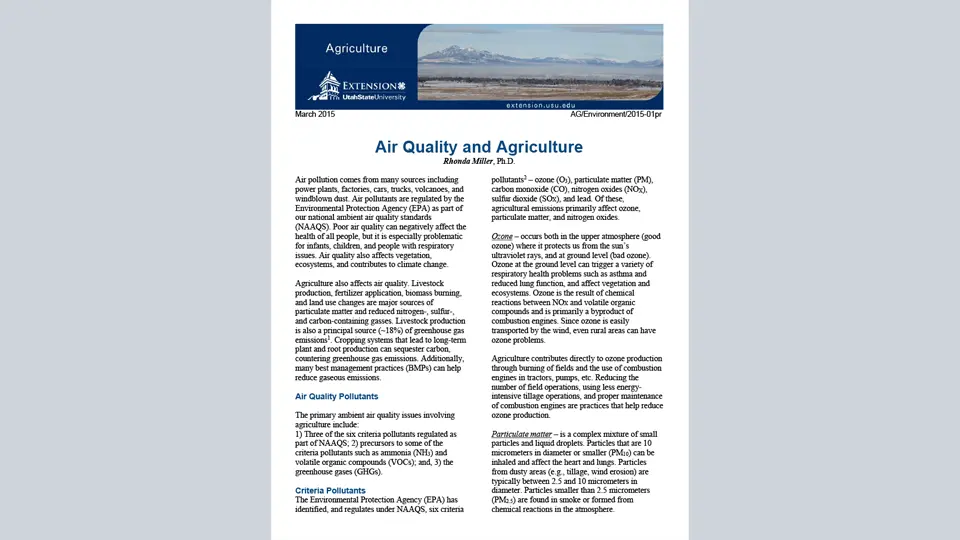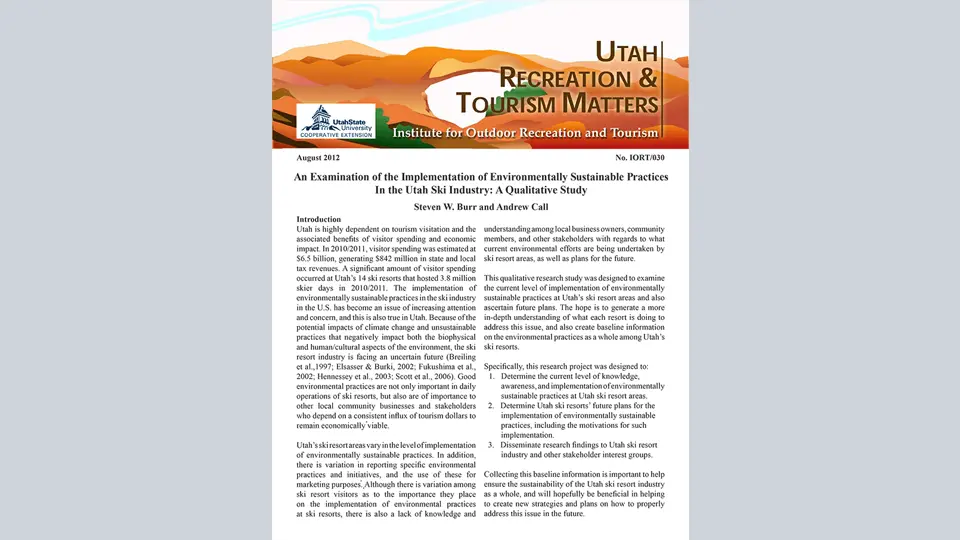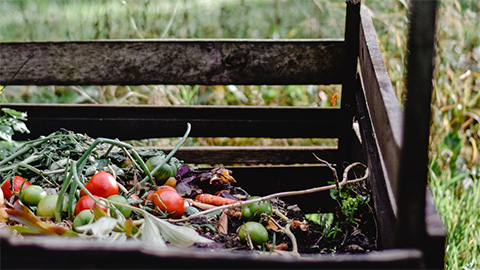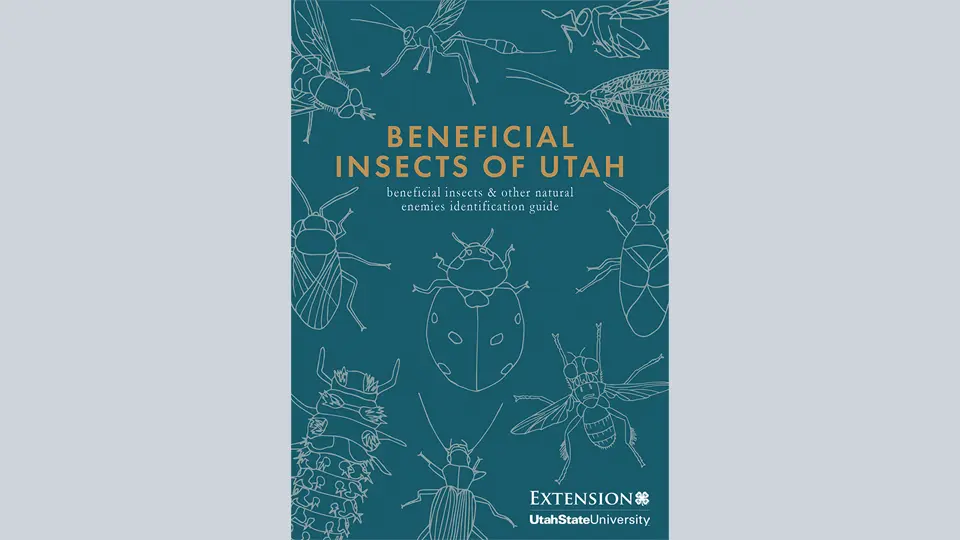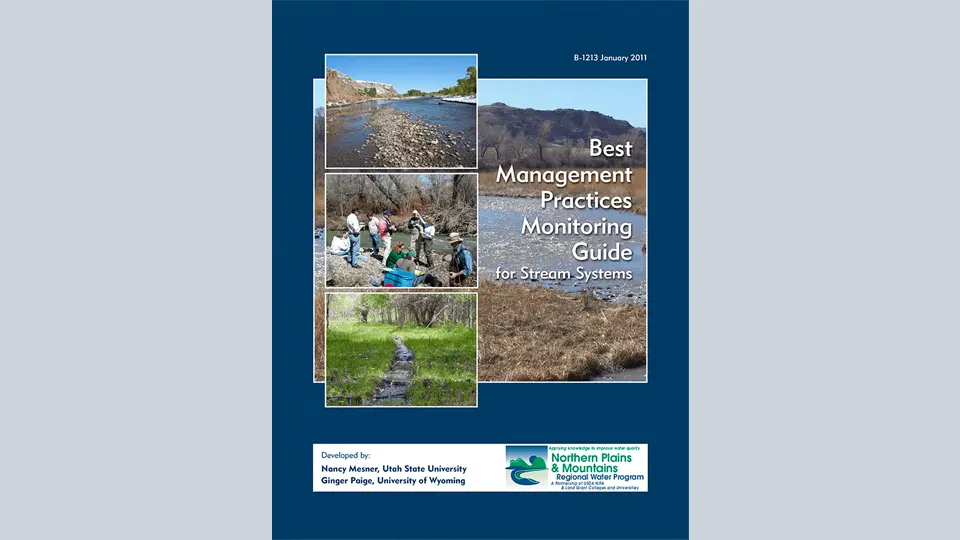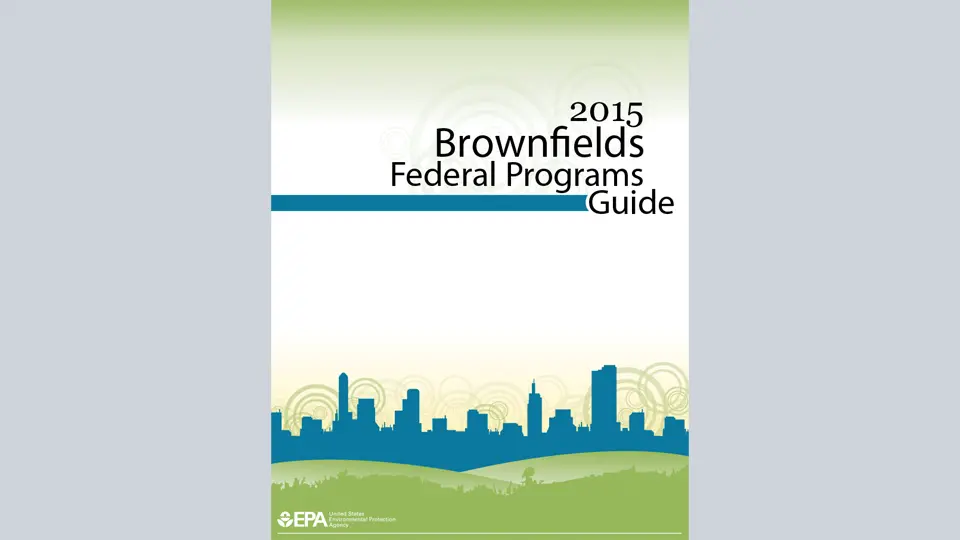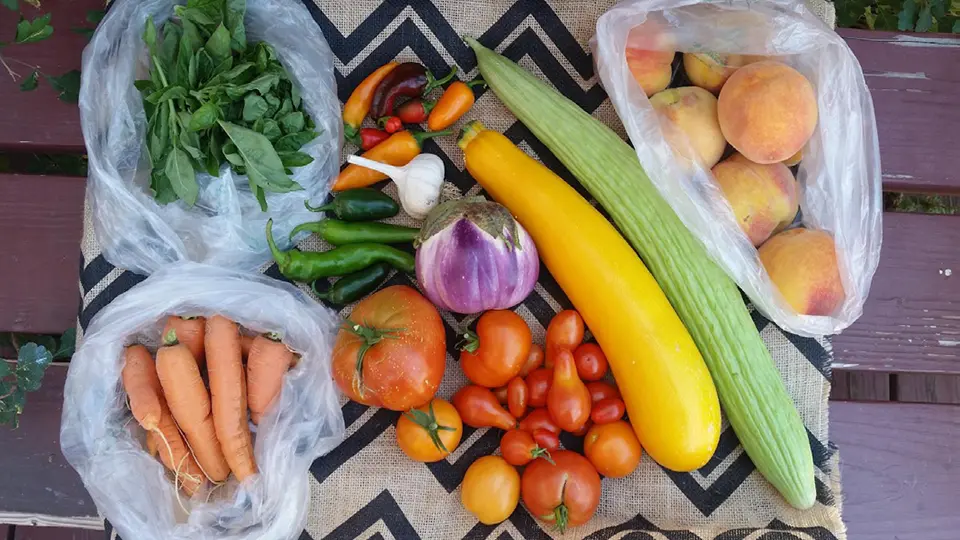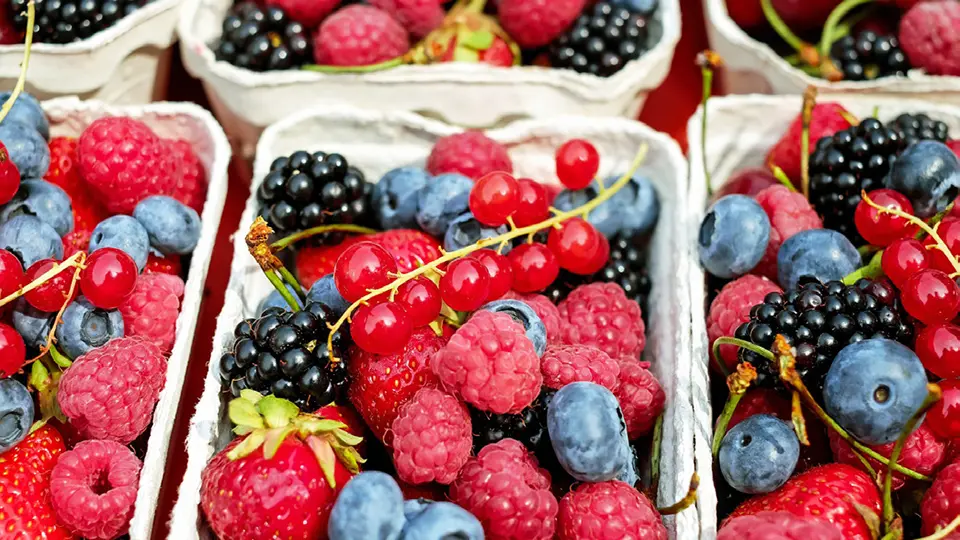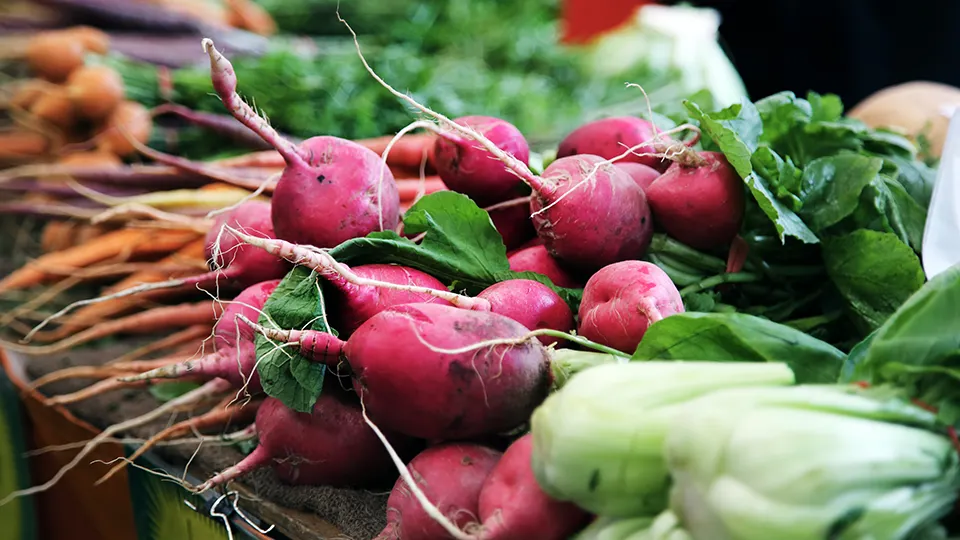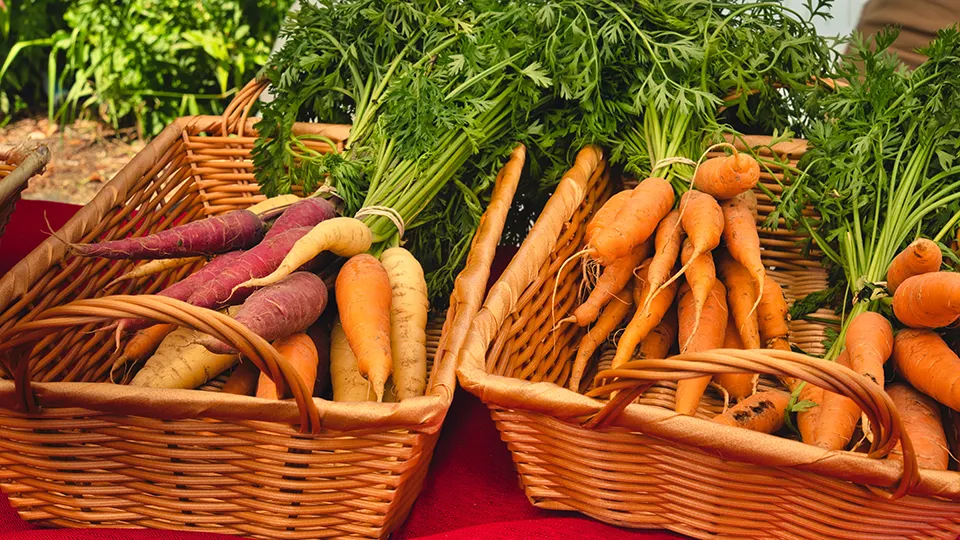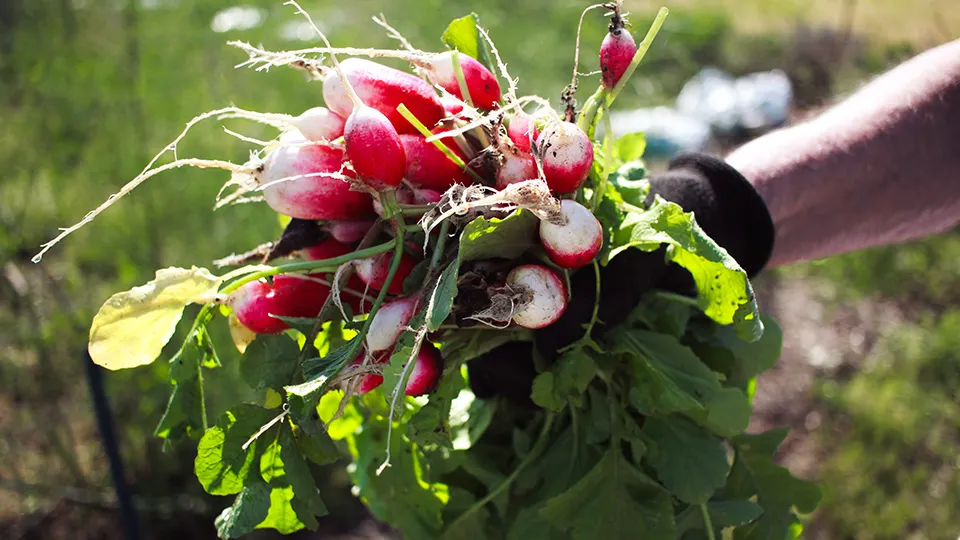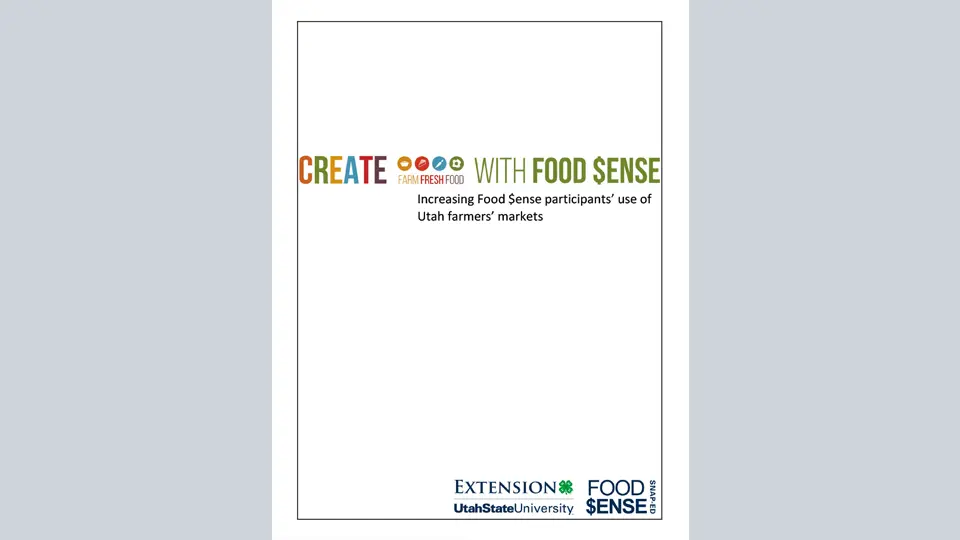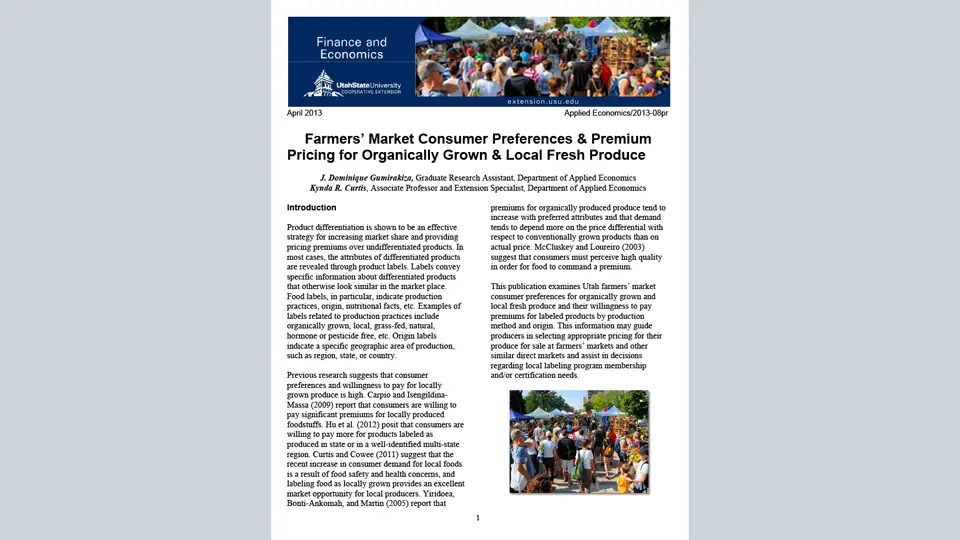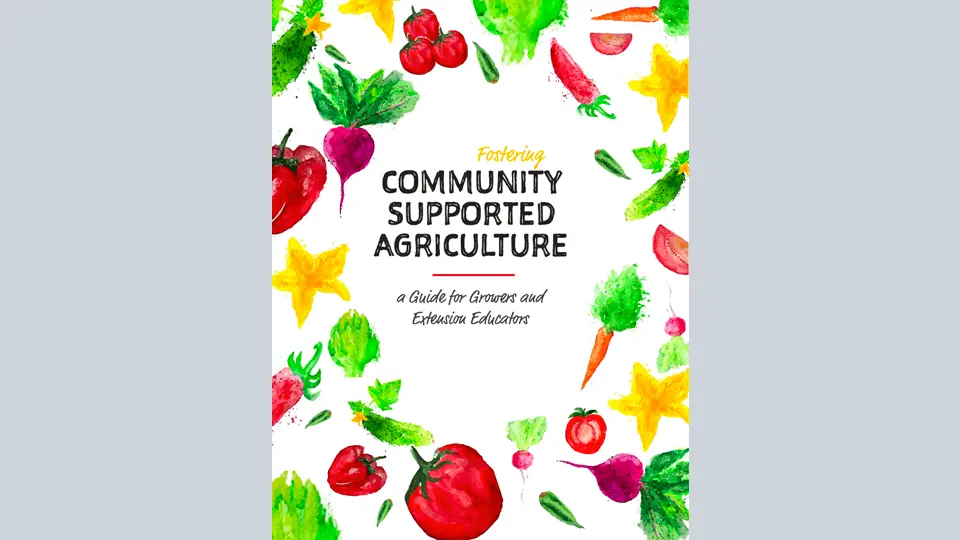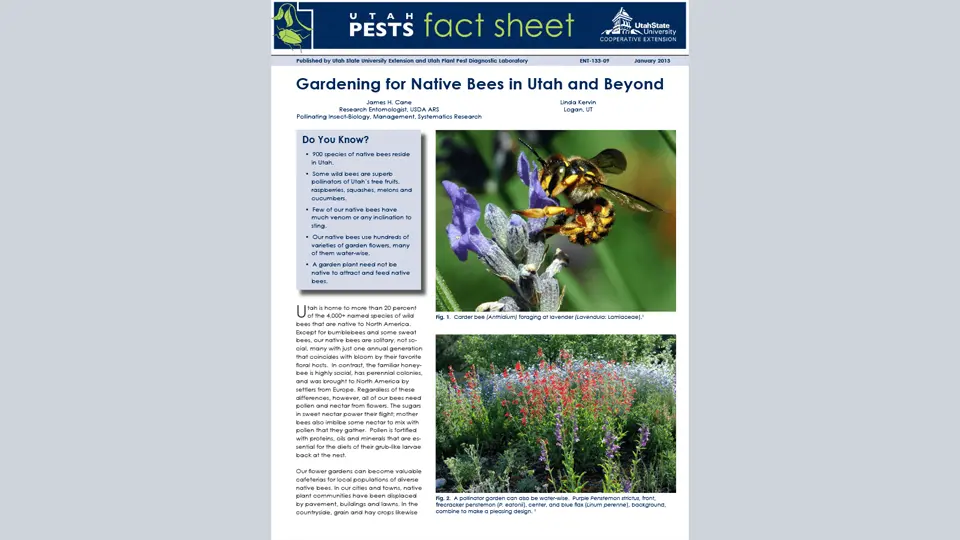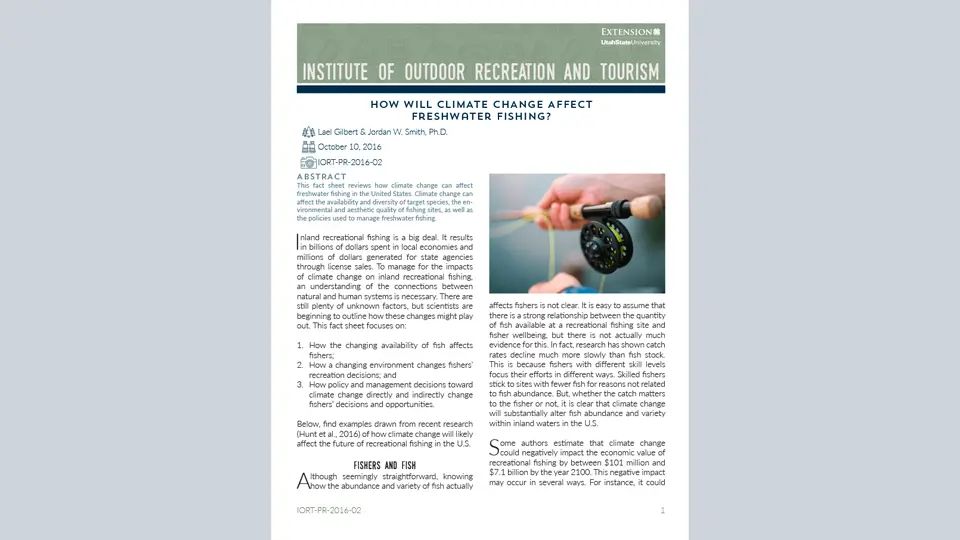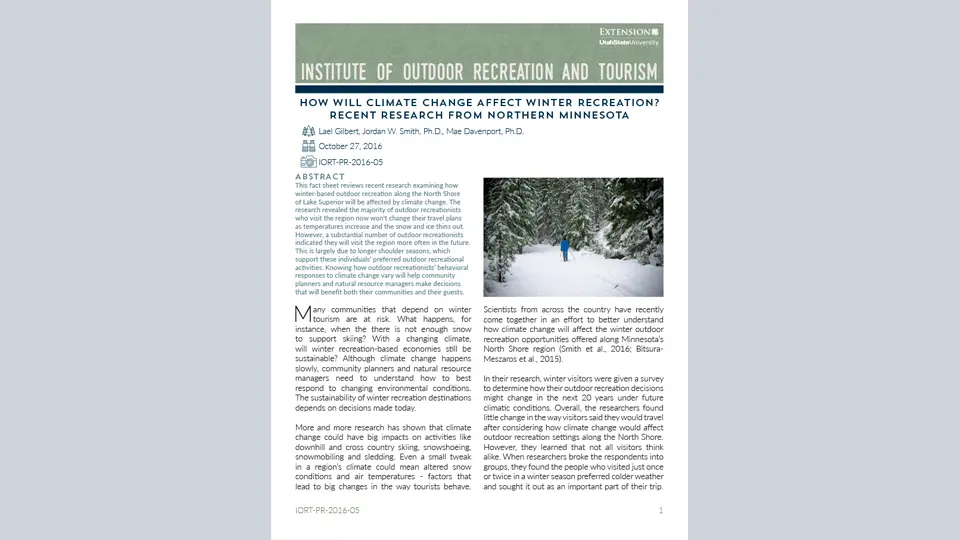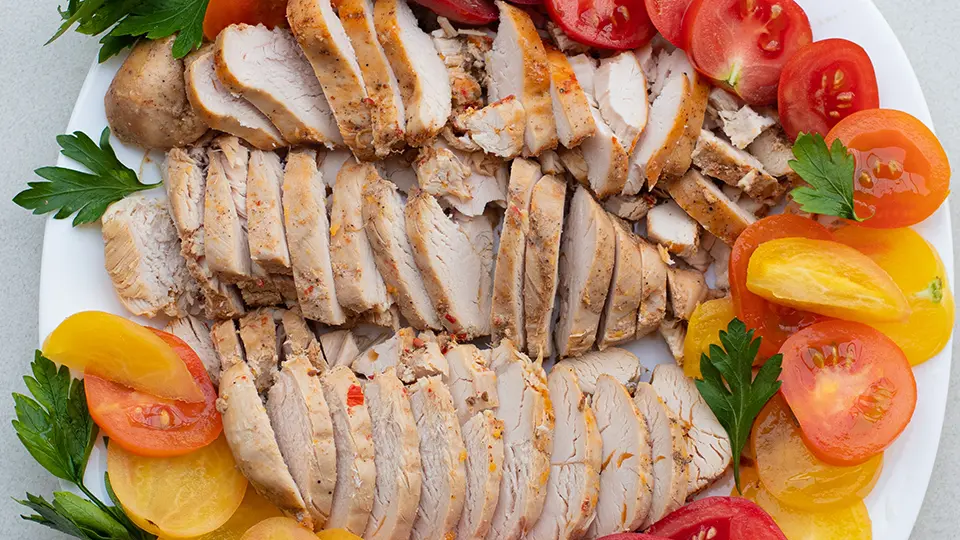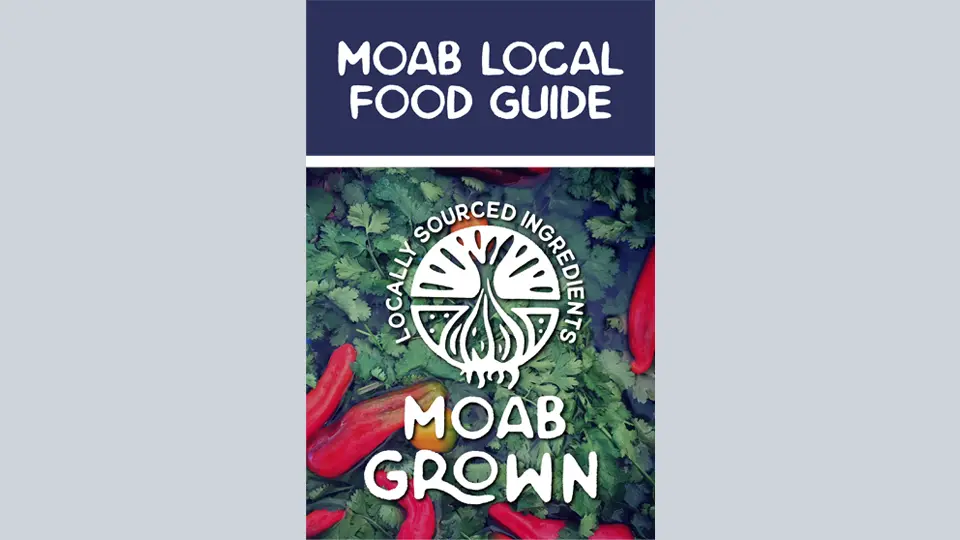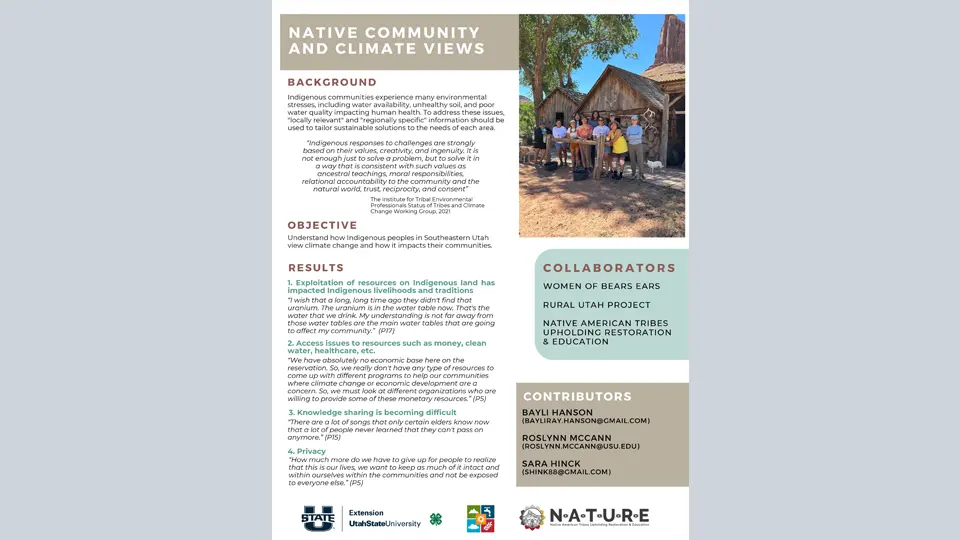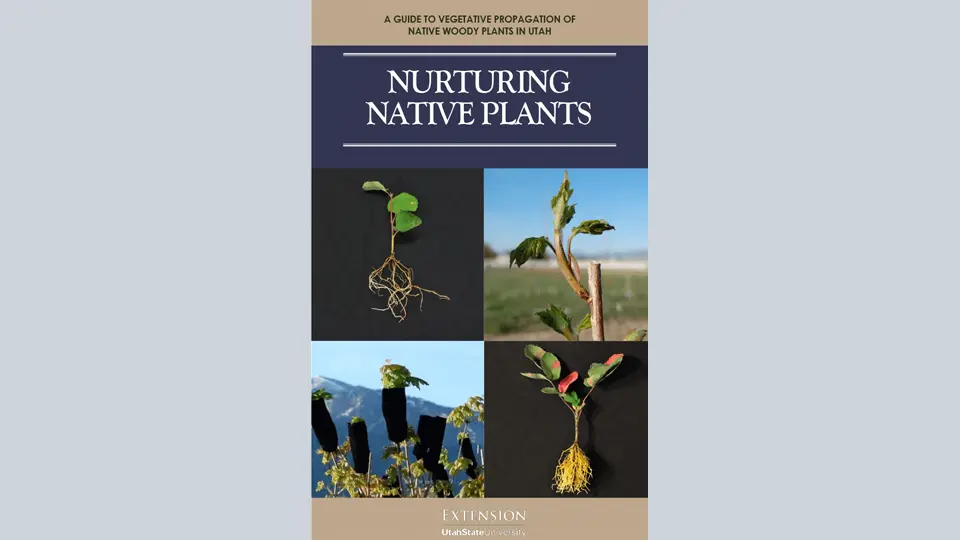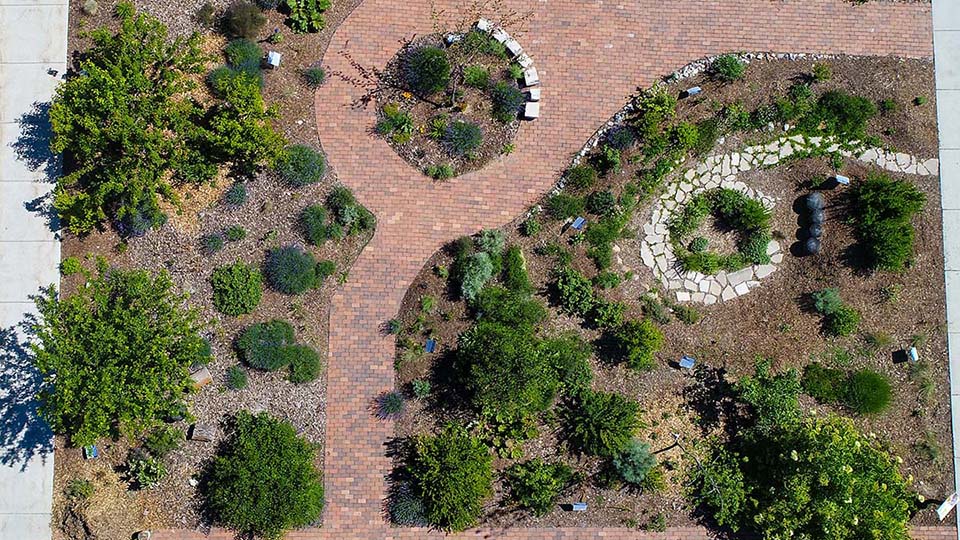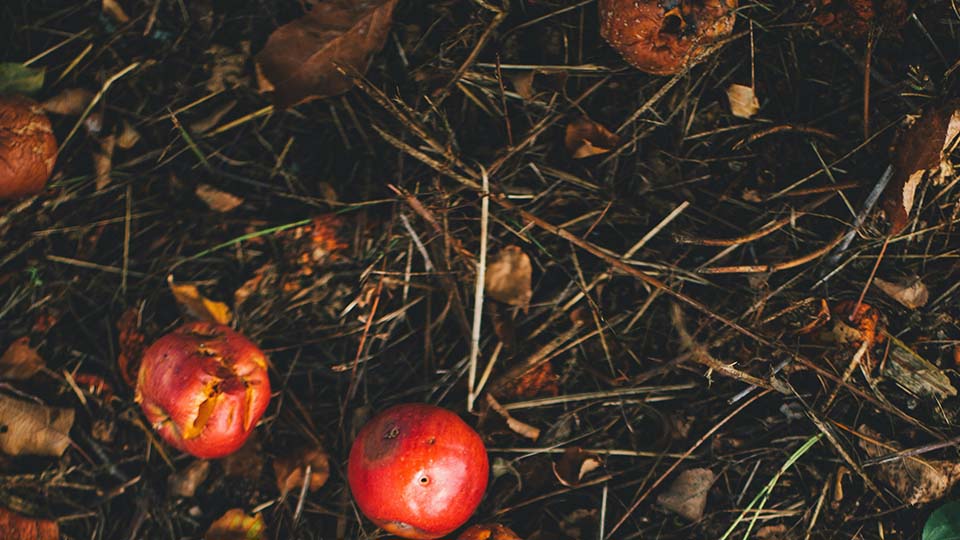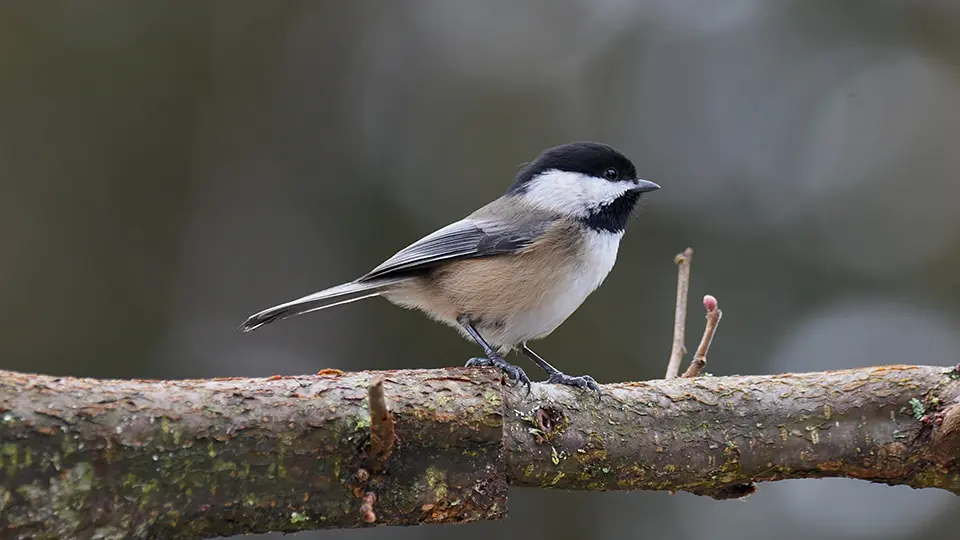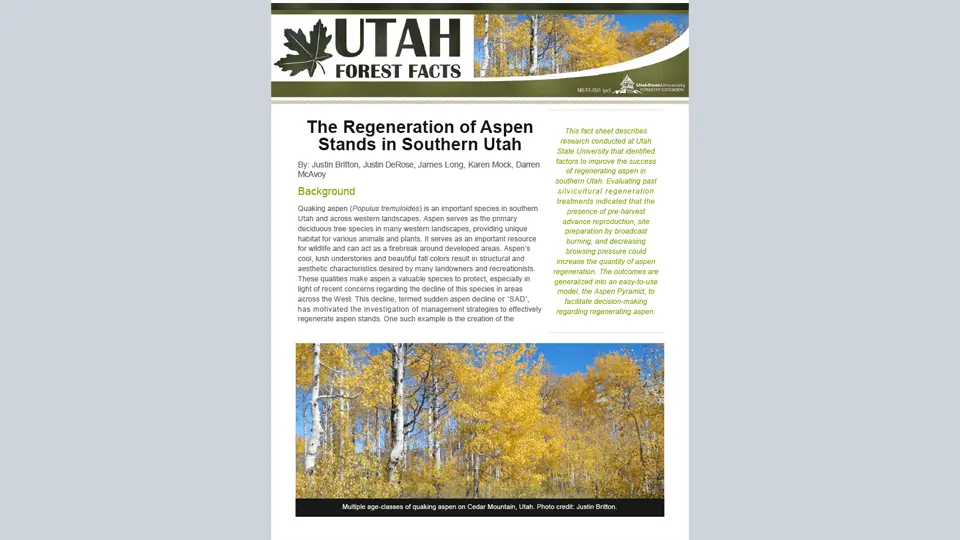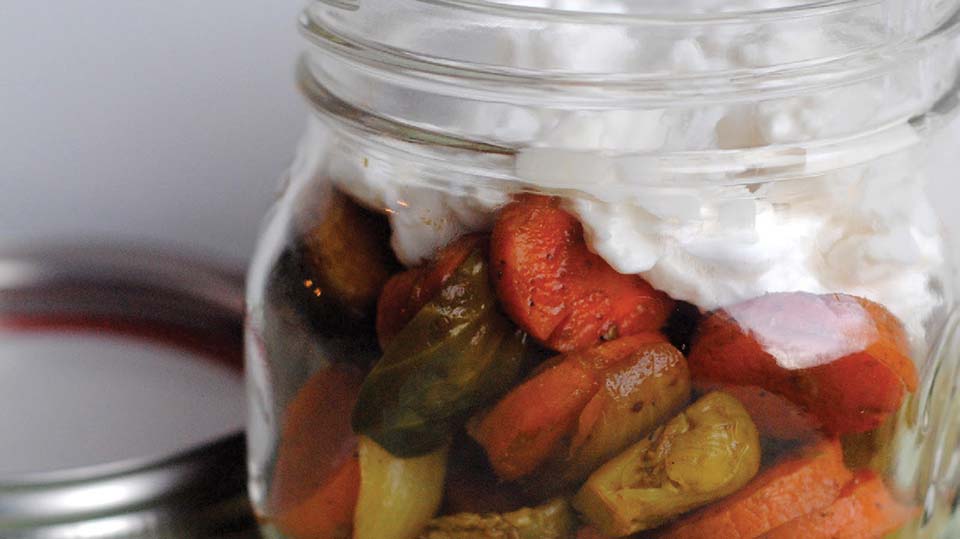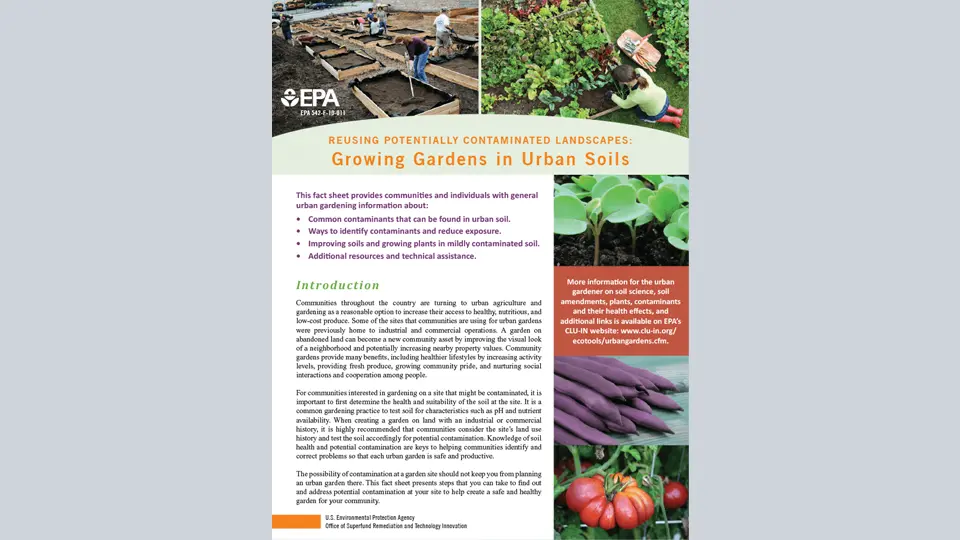Community Supported Agriculture: Pricing
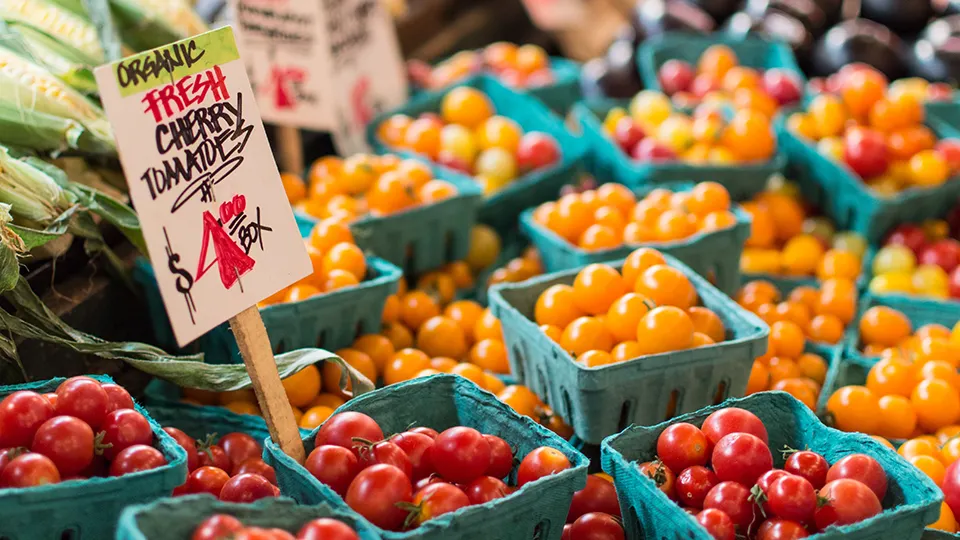
A Community Supported Agriculture (CSA) operation requires financial knowledge and planning. This information can help you through the financial process by explaining how to develop a budget, how to price your CSA share with different pricing strategies, and payment policy.
Developing a Budget
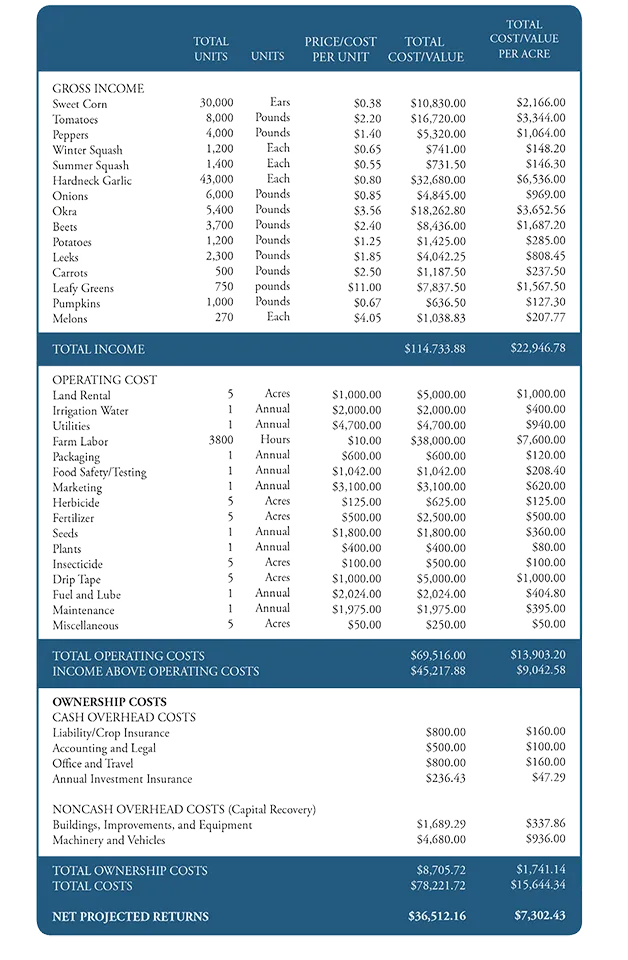
A budget is developed by first gathering information, including costs, income, and desired profit. First, you must determine your expenses and add them to calculate the gross (total) cost (NC State and A&T State University Cooperative Extension, n.d.). Then, you can list the desired income and share prices needed to cover the gross cost.
There are several costs to consider when determining the gross (total) cost. Fixed costs, which do not change if the output changes, include capital expenses such as payment for land, equipment, and tools (Allen, Curtis, & Slocum, 2015; NC State and A&T State University Cooperative Extension, n.d.). There are also variable costs, which do change with the amount of output. These include labor expenses (grower and worker salaries) and operating expenses (seeds, fertilizer, fuel) (NC State and A&T State University Cooperative Extension, n.d). Marketing costs should also be considered, such as money for advertising and events. These can be calculated by compiling data from previous years or by researching other local CSAs.
“A farmer or grower, often with the assistance of a core group, draws up a budget reflecting the production costs for the year. This includes all salaries, distribution costs, investments for seeds and tools, land payments, taxes, machinery maintenance, etc. The budget is then divided by the number of people the farm will provide for and this determines the cost of each share of the harvest” (CSA Utah, 2016, para. 1).
Pricing Shares
Cost-Plus Pricing
The price of shares should cover costs of production while allowing for a profit in return (Bruch & Ernst, 2010). This amount can be found through analyzing your farm’s budget and dividing the total cost (desired income) by the number of shares offered (CSA Utah, 2016). This strategy of pricing is known as cost-plus pricing (Bruch & Ernst, 2010). It is important to remember to include a reasonable salary, which compensates for your value as the grower. Many growers underestimate their own worth when determining a budget (Bruch & Ernst, 2010).
Competition-Based Pricing
Competition-based pricing is a pricing strategy that looks at what the price of shares are for other CSAs (Bruch & Ernst, 2010). By learning how much other farms are charging their shareholders, you will be able to estimate how much people will be willing to pay and the estimated worth of a share. You may set your CSA share price at a cheaper alternative, approximately equal, or greater price depending on your community, the demographic you wish to appeal to, and your produce and services offered.
“We look at what other people are filling theirs for and try and stay competitive and hope that we still make money off it. I also look at it as ‘what would I be willing to pay for it.’” - Utah CSA Owner in Northern Utah
Customer-Based Pricing
You should determine what customers are willing to pay for a share. This demand can be found by comparing prices offered by other local CSAs and by estimating the worth of your own offered produce (Bruch & Ernst, 2010). This pricing strategy can be referred to as “customer-based pricing”, when the customer willingness-topay determines the cost (Bruch & Ernst, 2010). According to CSA Utah (2016), the average prices of shares in Utah ranged from $300 to $600.
“We just pretty well base it on how much we can get out of it at the farmers’ market. If we can sell that item at the farmers’ market that’s kind of what we base our CSA off of. We give a little bit of discount because they are generally paying up front and or at a larger volume.” - Utah CSA Owner in Northern Utah
“We figure about $30 a week is what the market will bear so that is where our price is at. Our full share is every week and our half share is alternating weeks.” - Utah CSA Owner in Central Utah
Payment Policy

Establishing a payment policy helps to simplify any confusion or issues dealing with fees. This policy establishes the amount, method, and deadlines of payments (Bruch & Ernst, 2010). Many CSAs require payments to be made by the beginning of the season in order to cover planting costs (Bruch & Ernst, 2010). CSAs may offer a discount as incentive if this is the preferred option (Bruch & Ernst, 2010). For some CSAs, this discount may only be given if shares are paid for by a specific date, while the price increases after this deadline. It is also possible to set up a required initial deposit, followed by other installments throughout the season (Bruch & Ernst, 2010). The policy will also state whether cash, credit, or checks will be accepted by the CSA grower (Bruch & Ernst, 2010).
This policy may be included in a membership agreement form. If you offer several payment options, shareholders can select the option best for them. If you offer only one payment option, such as paying the entire share before a specific deadline, this can be clearly posted on the website or marketing materials.
Summary
A CSA operation requires financial knowledge and planning. You must gather information and develop a budget for the CSA operation. Different methods of share pricing include cost-plus pricing, competition-based pricing, and customer-based pricing. A payment policy establishes the amount, method, and deadlines of payments and helps to simplify any confusion or issues dealing with fees. With proper planning, you can ensure a successful return on investment in your CSA program.
Sources
- Allen, K., Curtis, K., & Slocum, S. (2015). Farm and food tourism: Exploring opportunities. Logan, Utah: Utah State University Cooperative Extension. Retrieved from http://www.westernsare.org/Learning-Center/SARE-ProjectProducts/Books-Guidebooks-and-Manuals/Farmand-Food-Tourism
- Armstrong, R. (2014). Building the base of your CSA on solid legal footing [Video file]. In Vimeo. Retrieved from https://vimeo.com/82409311
- Bruch, M. L., & Ernst, M. D. (2010). A farmer’s guide to marketing CSAs (PB1797). Retrieved from University of Tennessee Extension website: https://extension. tennessee.edu/publications/documents/pb1797.pdf
- CSA Utah. (2016). Become a CSA farmer. Retrieved from http://csautah.org/get-involved/become-a-csa-farmer
- NC State and A&T State University Cooperative Extension. (n.d.). Community supported agriculture (CSA) resource guide for farmers. Retrieved from https://growingsmallfarms. ces.ncsu.edu/growingsmallfarms-csaguide/
- Pennsylvania Association for Sustainable Agriculture. (2012). Guide to legal issues in community supported agriculture: The road to membership agreement. Retrieved from http://www.wilson.edu/sites/default/files/uploaded/guide_to_legal_issuesin_csa.pdf
July 2017
Utah State University Extension
Peer-reviewed fact sheet
Authors
Kenna McMurray, Kelsey Hall, & Roslynn Brain
School of Applied Sciences, Technology & Education & Department of Environment & Society
Related Research



